Tuesday 25th May 2021
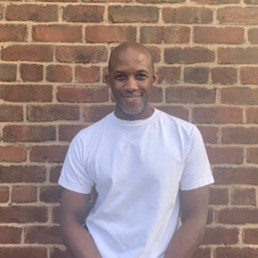
Written by Darren Crosdale
English and Media Studies-trained teacher, currently working in a large Liverpool comprehensive
This date will mark a year to the day of George Floyd’s murder. I use the word ‘murder’ deliberately because, despite the arguments that lawyers will no doubt make to the contrary, the world possesses clear, video evidence that it was murder, plain and simple.
I still have not seen the clip. I never will. To watch such imagery is, to my mind, self-flagellation. I do not engage in that torture and warn my family – especially my social media-addicted daughter – to think very carefully about the emotional toll such images can have on our psyche.
As the above date approaches, you can rest assured there will be blogs and vlogs and articles and news items asking how the world has “changed”. How that 8 minute and 46 second horror short and the resulting worldwide protests “changed” many aspects of society, including education. Like most teachers, I firmly believe in the power of education and I will definitely be curious about how the education world has “changed” following George Floyd’s murder. Up and down the UK, family, friends, colleagues and associates have responded to the Black Lives Matter movement with renewed vigour: change the curriculum; review the policies; train the teachers.
But as Frederick Douglass, the former slave turned writer and public speaker said: “Power does not concede without a demand.” I am not, at all, the only person who feels that the demands of racism are being placed on the shoulders of the victims. Such bitter irony. The stereotypes that we as thinking and evolving societies ought to have defeated centuries ago, remain: lower intelligence, higher physicality, unworthy histories. The list is, of course, longer and more subtle than this.
As an eternal optimist, I focus on the notion of things getting better in schools. I have to believe this. However, as an eternal optimist with a good memory, I recall that we have been here before. We have collectively focussed on “changing” our racist societies and racist institutions and racist individuals’ attitudes before. The whole country has been engaged in the discussion of diversity and inclusion and breaking barriers and moving forward more times than I care to count in my own lifetime.
The UK broached the topic of change after Stephen Lawrence’s murder in 1993 and the McPherson Report, four years later, made the term “institutional racism”, more mainstream. I worked in the Merseyside school that Anthony Walker, murdered in a racist attack in 2005, used to attend. People often forget that his White killers attended the school, alongside this wonderful young man. The Department for Children, Schools and Families examined the issue of Black educational attainment in 2007. Alexander Paul, an 18 year-old student from south London, gave a powerful presentation about being stopped and searched at the 2014 Conservative Party Conference. David Lammy, MP, in 2017 reviewed how ethnic minorities fared when they came into contact with the criminal justice system. I am not even going to discuss the coronavirus. The UK, a country that likes to boast about its multi-cultural status, ended up with one of the highest per capita death rates in 2020, and ethnic minorities were over-represented in these numbers as were the poor and public-facing workers.
Schools are especially busy as I write, early October, 2020. Most schools are engaged in some form of analysis: reviewing data, auditing curricula, employing speakers to deliver staff training. Will all these efforts to change the UK’s complicated attitude towards Black people in the education system yield results, however? There are still those on Twitter who struggle to link police brutality in the US with education in the UK (and, of course, fail to recognise this, in itself, is highly ironic.). So what if GCSE students, in 2020, do not study texts written by Black writers? So what if students do not learn the dual nature of Churchill? Wartime hero but also responsible for allowing three million Bengalis to starve. So what if students have no idea of the fuss surrounding Edward Colston’s statue being tossed into Bristol harbour.
What will schools be like by May 25th 2021? Will the government recognise that for all the past reviews and examinations of race, deep divisions and inequalities remain? Will the councils creating Task Forces to examine racial issues in their towns and cities create lasting change? Will enough school-based staff have had the necessary and uncomfortable conversations around race? Robin DiAngelo, in her best seller ‘White Fragility’ explains that middle-aged, middle-class white women are most likely to cry if their racial view of the world is challenged in any way. Will enough of these tears be transmuted into new ways of thinking and challenging the status quo?
The answers to these questions remain to be seen. We know our government has been remarkably quiet about the Black Lives Matter movement. The protests threw a much-needed light on our society and its continuing struggles with race – mostly because the education system has never properly learned to discuss our troubled history in an honest and guilt-free manner.
I watched BBC presenter Daniel Henry’s inspirational documentary ‘Fighting the Power: Britain after George Floyd’ (directed by Eddie Hutton-Mills) and wondered about the young Black women who, with their passion and social media savvy, organised huge marches in lockdown London during the summer of 2020. Will they be disappointed in a year’s time? Will they have noticed any changes? Will prime minister Johnson’s racial disparity review (led by a controversial Munira Mirza who is not quite sure if institutional racisms exists) have reported back by then? Who knows?
What I do know is that for the children in school at the moment – all children, not just the Black ones – carrying on as if huge protests about race never happened, as if things do not need a good shaking and sorting, as if their teachers do not need to learn about all types of inequality, is not an acceptable option.
Darren Crosdale
www.blackteachersanecdotes.co.uk
Cultural Competency
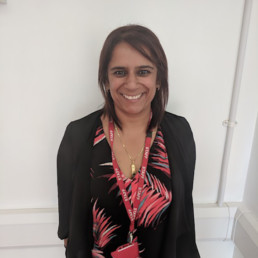
Written by Amardeep Panesar
Headteacher with two decades of experience in education
As an ethnic minority leader, many challenges and barriers do come our way. It is how you perceive them and more importantly yourself in order to be successful. I personally, do not see these as hindering barriers, but challenges that I know I/ we can overcome, depending on “how badly I want something”. A philosophy that most definitely comes from my foundation and sports participation – let your work do the talking!
I’m writing my first blog on Cultural Competency based on a fantastic opportunity given to me by Diverse Educators in particular Hannah Wilson, following the response on social media, I’ve realised just how powerful this platform really is in developing educators! So let’s do it…
Why is it important to be culturally aware of the needs of our children?
Let us first look at the statistics:
- African / African Caribbean people face more ingrained pathways into the criminal justice system as a result of greater levels of disengagement and exclusion from school (Wright, Francis and McAteer, 2015).
- Over the last five years, the number of young ethnic minority people in the UK who are long term unemployed has almost doubled, whereas for young white people it fell slightly.
- In 2014, the probability of Black African women being detained under mental health legislation in England was more than 7 times higher than for White British women.
- People from ethnic minorities are twice as likely to live in poverty compared to White people across Britain.
With these statistics against us and the young people we work with, it is crucial to be culturally competent when educating our young children. Both for adults who are from and ethnic minorities and those that are not, in order to give our children the best possible life chances in order to become successful citizens.
In order to fully support and understand, it is critical to understand self and others perceptions, which can be categorised under four main areas:
- Attitudes and beliefs towards others.
- Attitudes and beliefs towards others of the same group.
- Attitudes and beliefs towards members of different minorities and
- Attitudes and beliefs towards members of the dominant group.
As we read on, do take a moment to self reflect and and understand your own perceptions towards others, because we all have them. We are naturally hard wired to like people like ourselves, people who look like us, think like us, share similar values and visions. We need to continue to educate our staff and children on how/ why these perceptions exist and how collectively, over time, things will start to change by listening to each other. Diverse education is crucial, in all areas, especially in culturally diverse schools.
We can all share our experiences through school leadership and educating children. For me, as an ethnic minority leader, everything I have learnt so far has only empowered me to support others in our profession and to help individuals understand culture and children! Every day we learn…
The world assumes the young people of colour will fail or behave a certain way, we as educators, MUST do the opposite.
Diversifying representation while working with textbooks

Written by Chris Richards
MEd in Applied Linguistics and currently works as a Teacher Mentor in Madrid
I have a vivid memory of being told about the importance of images in my classroom. It was 2010, I was doing my PGCE and was eager to start teaching. I remember that this was the first moment of many that shaped the way I have approached diversity and inclusivity in the classroom ever since. As this post explains, the issue of representation in the classroom has come back to me again in recent years.
When I was teaching English language and literature in England and Wales, we made very little use of textbooks. This certainly made things challenging for a newbie, but to focus on the positive, it also gave me a lot of freedom to make my own choices about which images in the classroom. I learned quickly that you have to be careful when you do internet image searches and not for the reasons we tell our young pupils to be careful. Just last week, in preparation for my contribution to DiverseEd: The Virtual Conversation, I searched for some images. With the search term ‘reading’ I found mostly kids, mostly white. The first four were of girls and the first negative image I found was a bored boy holding a book. When I searched for ‘man reading’, men from BAME backgrounds appeared just twice in the first thirty-two images, and the first appeared twelfth.
In 2016, I moved to Spain and began teaching English in a private language academy. It was a huge change in pace, lifestyle and teaching philosophy, and was the new challenge I needed. Aside from very small class sizes (I now work with a maximum of eight), the biggest difference was the use of a course book. In the first institution I worked in here, every group has an assigned course book that we followed across the course of the academic year. Very quickly, I started to notice that representation was very narrow and, while studying for my MEd in Applied Linguistics, I decided to write my dissertation on how gender and sexuality get represented in a sample of course books. It all began with a page about “different” weddings in the UK that had four photos: four straight, white couples. To paraphrase 20,000 words, on the whole, gender was presented rather traditionally, although there were some images of women in positions of power; minority sexuality was conspicuously absent from the pages.
Whether we’re working with course books or not, we should always be ready to substitute and supplement, especially so with images as these can be a very powerful way to give, or withhold, representation. We also need to consider what texts pupils are reading, lest they are always reading the same stories and hearing the same voices. Whose stories do get told and who gets effectively silenced in our classrooms? If we give space to one image or story, we reduce the space for others. Ultimately, this is simply a question of inclusion.
Also crucial is asking ourselves what unwanted or unintended associations inclusion might bring. For example, are people with disabilities routinely referred to in heroic situations, overcoming their disability rather than as people whose identities extend beyond their differences? Are we remembering to show women in positions of power and responsibility outside the home, but forgetting to represent men in caring or homemaking roles? Are LGBTQ+ folk only shown when their minority sexuality is the defining factor?
Asking ourselves these questions initially is effort, but once it becomes habit, once it becomes part of planning and preparation routine, it becomes normal. I can’t look at a course book page now without quickly scanning it for representation. I don’t always choose to substitute and at other times I might specifically leave unrepresentative material as it is, and ask my students what they think might be missing. I turn over that critical evaluation process to them, so they can start to perform this analysis themselves. After all, I won’t always be there to recast the material they encounter in their reading and viewing lives.
My final thought is that we should always be asking ourselves who gets a voice and who gets seen in our classrooms.
Chris Richards, Teacher Mentor
Chris first taught in the UK high school system in inner city Birmingham and South East Wales, but has been working in English Language Teaching (ELT) since 2015. He holds an MEd in Applied Linguistics and currently works as a Teacher Mentor in Madrid. He is particularly interested in inclusivity/diversity, literature, and the use of first language in the ELT classroom.
Supporting quiet shy or anxious Black, Asian and minority ethnic children with English as an additional language in the Early Years.

Written by Dr Susan Davis
Senior Lecturer at Cardiff Metropolitan University
Many articles that have been written in relation to the Black Lives Matter agenda, state that education is key to improving Black, Asian and minority ethnic (BAME) children’s life chances (Blair, Bourne, Coffin, Creese, & Kenner, 1998; Blair, 2002; Ofsted, 2005). However, the system itself is at fault. The UK educational system perpetuates disadvantage: from the very earliest years of schooling (Richardson, 2007; Tomlinson, 2008) children’s sense of identity may be affected by a range of factors such as their experience of being in a minority, or having a lack of BAME role models. School staff may demonstrate unconscious bias in relation to these children. There is also an impact of differing levels of staff knowledge and understanding in relation to cultural issues. We can see how inequity becomes embedded as a result.
My research on how quiet, shy or anxious children cope in the early years classroom was based on a targeted programme entitled Special Me Time (Davis, 2012) aimed at supporting quiet children in vocalising their feelings; accessing classroom opportunities; and communication and developing friendships. Evaluation of the programme was conducted in early years classrooms predominantly in south Wales. I found that this intervention especially benefitted BAME children with English as an additional language (EAL). These children worked very effectively in a smaller group dynamic with more support. It is essential to allow young children with EAL longer thinking and processing time in relation to oracy, especially when responding to teacher questions. Quiet children with EAL need additional time to formulate replies, in a busy mainstream classroom.
The taught sessions were delivered to small groups, over a six-week period. Baseline evaluations were employed. Assessments were taken at the start and on cessation of the programme. BAME learners with English as an additional language made significant gains in their personal and social development as a result of engagement within the smaller group dynamic. This was true across all settings in the research project. A year 1 teacher on the programme stated:
‘I have some very shy children in my class, many of them would play alongside others and not join in or were led by others. A BAME child with EAL – K – was the child that I noticed got the most out of the Special Me Time (SMT) programme; after taking part, she played with other children in the class much more. Now she will initiate games with the others, where she would not do this before. She really bonded with E (also BAME EAL) during the SMT programme – they had not been friends before, but they both grew in confidence and this was due to the programme.’
It became apparent that the role of the teacher or teaching assistant was paramount, in relation to supporting the children’s oracy, confidence and engagement skills. The support needed was simple, such as giving children peaceful time in the book corner of a classroom or allowing them to work alone, or in pairs rather than in large groups. Taking time to listen to the children when they were speaking, without any interruptions, and also waiting for them to offer answers to questions in their own time, rather than rushing them, was also particularly effective. The research also found that the children had improved social and emotional skills, gained within the small group dynamic and were able to effectively transfer those skills to the wider classroom, demonstrating improved confidence and communication skills.
To conclude, it is pertinent that teachers are aware of the needs of all BAME learners and support them accordingly. Brentnall (2017) suggests that we need to train teachers in diversity awareness and equip them with strategies for supporting and raising attainment across the board. BAME children with English as an additional language need to be in classrooms where the practitioner is aware of their specific needs, in order for them to thrive. In a nurturing classroom, with a high level of support, and with an intuitive and emotionally literate practitioner, this research study suggests that the child can flourish and as a result their life chances and educational trajectory will be significantly enhanced.
References
Blair, M., Bourne, J., Coffin, C., Creese, A., & Kenner, C. (1998). Making the difference: Teaching and learning strategies in successful multi-ethnic schools. England: Her Majesty’s Stationery Office.
Blair, M. (2002). Effective school leadership: The multi-ethnic context. British Journal of Sociology of Education, 23(2), 179–191.
Brentnall, J. (2017). Promoting engagement and academic achievement for Black and mixed-ethnicity pupils in Wales. Cardiff: Welsh Government. Retrieved from https://gov.wales/barriers-learning-faced-black-and-mixed-ethnicity-learners-report
Davis, S. (2012). Examining the implementation of an emotional literacy programme on the pedagogy and reflective practice of trainee teachers (EdD thesis, Cardiff Metropolitan University). Retrieved from http://hdl.handle.net/10369/3975
Ofsted. (2005). Race equality in education. Good practice in schools and local education authorities. Retrieved from https://dera.ioe.ac.uk/5546/1/Race equality in education good practice in schools and local education authorities (PDF format).pdf
Richardson, B. (2007). Tell it like it is: How our schools fail black children (2nd ed.) London: Bookmarks.
Tomlinson, S. (2008). Race and education: Policy and politics in Britain. Maidenhead: Open University Press.
An Ethical Curriculum
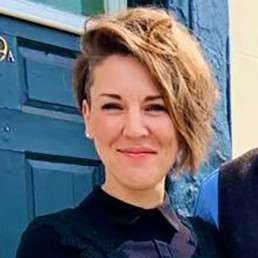
Written by Kate Smith
Compassionate school leader (and former headteacher) with a passion for developing an #ethicalcurriculum.
2020 has been the year that teachers and leaders have faced a plethora of unthinkable challenges and demands. But, despite the pandemic, and the pressure of the current Edu climate, children’s social and emotional development has to remain of the utmost importance in schools. I think now is a pivotal time to be thinking about how well our curriculum is serving our young people.
I recently joined an awesome line up of educators for the third TMBuffet, hosted by the impeccable @Mr_Speighton, and organised alongside @JamesWJCain on GoBrunch. This was a new webinar platform to me, and despite my tech issues and the kids overflowing the hot tub in the garden to distract me, it was easy to navigate and I liked the visual representation of the theatre (although there wasn’t a lot of virtual social distancing going on!) so you could see who was sat in the audience, waving you on. The platform had a great chat function too, so it was easy to interact with your audience and respond to live questions.
I spoke about why curriculum reform and evaluation is so pertinent right now; what sort of issues and themes are relevant to include when developing an #ethicalcurriculum and shared some practical steps you can use to start designing and implementing a holistic, values based curriculum in your school. We looked at the following steps as a starting point.
We are navigating complicated times. The pandemic is now exaggerating issues that we still fighting to make headway on. Child poverty is on the rise, racism and discrimination are still rife, there’s been little movement on the gender pay gap and our planet is being neglected. Sounds stark? Well it is. And I’m an optimist! We have a responsibility to our young people to ensure they thrive both academically and holistically in their education and the time is now!
It may not feel like it, but schools do have considerable freedom over how they deliver their curriculum. Academies, Free Schools and Independent Schools have even more than State Schools, so now more than ever, is a great time to think about whether your current curriculum is serving your children and your community. Curriculum development is a long haul task, but a beautiful one, and an ethically focused curriculum, carefully crafted with the whole team, will mean the children, and the staff and families, will reap the benefits for years to come.
There are certain subjects in the curriculum that are naturally easier to use as a platform for teaching more ethical topics, such as teaching about climate change through geography, or LGBT relationships through RSE or PSHCE. However, because the themes that are most relevant to teach our children, in terms of enabling them to develop into compassionate, responsible global citizens, are not explicit in the National Curriculum, then it’s down to school leaders and teachers to be creative in interweaving these key themes in, to ensure our pupils are able to create a kinder and more sustainable world.
I thank the stars the PSHCE is now a statutory subject, however, Global Citizenship is not a required NC subject until KS3. So, if you are interested in teaching global citizenship in primary, then you need to think carefully about how you can interweave themes into the subjects you already teach, or, how you can specifically carve out some time from your (already crammed) timetable.
As often is the case, the best place to start is by using what you know about your children, your community and your context. What is it they need now, and also, what they are going to need in the future? How can you challenge and strengthen their attitudes, develop their self awareness and equip them with skills, knowledge and understanding to offer them the best life opportunities through your curriculum?
Each school is contextually unique which I think is what is so special about curriculum development; it’s so bespoke and yet so diverse.
Why teach an #ethicalcurriculum?
We want to ensure that we are teaching a diverse and colourful curriculum.
We want to ensure we are teaching to promote equity and inclusion for all under represented groups and all of those within the Protected Characteristics Groups.
We want to be educating our young people on issues around sustainable living, and the importance of becoming globally minded citizens in order to make the world a kinder place.
To what extent does your current curriculum amplify these themes, and therefore, how well is your curriculum serving your young people and your community?
Step 1 : Focusing on Relevant and Ethical issues
It’s important for children and young people to see the relevance of what they are being taught, otherwise, what does it all mean for them? Black Lives Matters, The Gender Pay Gap Issue and recent Australian Bushfire Crisis are all recent events to interweave into your curriculum. Teach the children about how the issues effect their families, friends and future. Be aware of what’s going on Globally, Nationally and Locally to inspire you to incorporate relevant and ethical themes into your subjects. Additionally, identify any areas that specifically relate to your context, or that you feel are valuable on a global level.
Start this by creating a list of themes that are of interest to your school’s context. If you don’t have ideas to begin with, take a look at Global Dimension’s website and use this as a starting point to research ethical themes. If you are looking to improve Diverse representation then I’d highly recommend Diverse Educators shiny new website as a one stop shop to signpost you to those who can support you with work around the 9 Protected Characteristics of the Equality Act 2010. Then, consider where these themes would fit into each subject of the curriculum. It’s important to consider the appropriateness of each theme with regards to age, or your school’s context. If you’re keen to teach about equality for example, why not start with exploring gender stereotypes in your Early Years classrooms?
Children are subjected to gender stereotypes very early on. Consider how detrimental this can be?
A basic starting point is to think about issues that are particularly relevant to the context that you are in. There can be two ways of thinking about this: firstly, looking any gaps that you need to fill to improve your ethical curriculum offer: So you might be in a school which has issues with, for example, homophobic attitudes and therefore you need to further develop the value of compassion or respect. Or, you might be in a a school with a large refugee community, therefore, you need to nourish the values of empathy and humanity. Perhaps you’re in a school which is lacking in diversity, and consequently, your values need to promote respect and equality. On the contrary, if you are a school which is doing great work on climate change, or celebrating diversity, then you might want to strengthen your #ethicalcurriculum accordingly through a focus on the values of Leadership or Service.
As a a quick example, just think about specifically teaching about Equity. There are several themes here to be addressed; gender pay gap, global inequality in education, stereotyping, rights for LGBTQI+, racism, social mobility, the justice system, poverty, ableism, the protected characteristics… there are so many imperative topics to be interwoven in the curriculum in this area. Learning about these themes develop the values of self respect, involvement, empathy and advocacy to name a few.
We can do this through the use of children’s literature; through using media and through using lived examples. If you haven’t already used or experienced LYFTA, then I can’t recommend it highly enough. It’s a beautiful and interactive online platform which support values and citizenship development through exploring lived experiences from all over the world. (Currently, you can access free CPD which enables a term’s subscription for your class, plus a British Council Level 2 CPD certificate upon completion of the webinar and review session.)
Step 2: Using Values to Guide you
Think specifically about which values you want to instill in your children, to allow them to create a kinder more sustainable world for themselves and future generations. The context of the school may influence this greatly and many MATS and Faith/C of E schools often hold their own set of collective values. Values are completely universal, however, the values you choose to focus on can still be specifically relevant to your school context too. So, the best place to start is using what you know about your children, your community. Consider what they need now, and for the future. A great place to start is by inviting your community to join you on your values journey. Share lists of values and ask them to send you the three that they think are most pertinent to them and the school. Many schools have a set of values that they focus on throughout the year; by week, month or even a term at a time. These are then creatively interwoven into assemblies, lessons, conversations, long terms plans etc. In the wise words of Mary Myatt however, ‘ Values must be lived – not laminated.’ So using your values within the curriculum authentically and deeply is the key.
There are hundreds of values to choose from. Which are relevant to you and your setting?
Consider: Which values do you need to nurture in your children, and how are you going to be active in doing that? How can we use our positive influence as teachers and leaders to nurture a school’s collective values and a set of core values for each pupil?
If you are looking to achieve a Quality Award for you work on developing values, then I would highly recommend that you contact The Values Based Education Network who can support you on this process. They also run INSET on how, as a whole school, you can develop your vision and align them with your values. This is such an empowering and enlightening process!
Reframing and Renaming
Renaming the titles of your topics or schemes of work can be incredibly powerful and help you shift your mindset and focus onto the ethical and moral aspect of a topic. You might use a KS1 Geography unit of work on the physical environment to look at the impact of say, Plastic Pollution. Then, reframe the title of your topic to reflect that focus. For example ‘The Blue Planet’ or ‘Saving our planet’, which gives real scope for exploring the effect of plastic pollution on our oceans and environment. If you’re looking at teaching a unit of work on design in DT in KS2, then why not reframe the focus onto the Effect of Fast Fashion and the impact on child labour, therefore developing the value of empathy and agency. If you are teaching about Nutrition in KS3 then can you focus your work on ethical farming, or food poverty, again promoting those values of accountability and collective responsibility.
This Banksy mural, which depicts a young boy toiling over a sewing machine making Union Jack textiles, could be a visual starting point for a lesson around child labor and humanity.
The 5 year-olds we teach now are going to be our future activists, our future humanitarians, our future engineers, our future environmentalists, our future policy makers. The curriculum we teach today is about ensuring that our children and young people thrive in five years, in ten years, in 30 years time. That’s why we have to teach children about physical and mental health, about looking after the environment, developing empathy for others and a desire for social change NOW. In doing so, we will all play our part in creating a kinder, more sustainable world.
Click here to download the slides shared at tm-buffet-2
Student leadership programmes and celebrating diversity: students as drivers of change

Written by Sadie Hollins
Students are drivers of change. As educators I’m sure we can all think of times when students have been the key stakeholder that affected positive change in our schools, whether that be at the classroom level or at a schoolwide level. I have felt fortunate to witness a number of our students make a stand, whether it be fighting for the rights of the student body as a whole, or coming together to support a member of their peer group facing a particular challenge, such as ‘coming out’. This is student leadership.
I have been in awe of what our Student Council has been able to achieve in terms of the quality of events they plan and host, and the fundraising projects they have created. As well as how the Student Executive Board works together along with class and year group representatives for the Student Council to discuss ideas and how they might be implemented in the school. This is student leadership.
Students drive change.
It struck me recently that often this instinct to drive change comes intuitively to students. School is such an important and informing experience for young people to learn about leadership, and for some may be the only ‘organisation’ they experience being a part of until they reach university or work. How we define leadership, and how we lead as staff, will indirectly inform students how leadership works. For better or worse.
Schools offer many leadership opportunities for students to be a part of, including captaining sports teams, editing school magazines, holding positions such as prefects, student mentors, peer tutors, Student Council members, and many more. However, a lot of these opportunities tend to be most readily undertaken by students that excel in some form, whether that be academically, socially, or physically. A lot of the time students that take on these roles are the ‘good’ students. This in turn can send a message to other students about what leadership is. Leadership is for ‘good’ students.
A lot of these roles don’t come with any ‘Leadership’ training for the role, so it’s often implied that you learn by doing. Whilst I think there is a lot of merit to this approach, I feel that if we work with students to help them define what Leadership means to them and help them (all of them) develop their skills, perhaps we can empower a bigger portion of our student body to drive change.
Last year we started 2 different Student Leadership programmes (Level 2 and 3 Leadership programmes from Sports Leaders UK) in our school. We’ve just begun the Level 2 course with our new Year 11 cohort, and this week we got students to rate themselves according to the different Leadership skills outlined in their course booklets (communication, teamwork, organisation, problem-solving, etc). One of the areas that they had to rate themselves on, and explain a little more why they had given themselves their score, was ‘self-belief’. When going around and looking at their work I was struck by how many students had rated themselves so lowly in this area (scoring themselves less than 5 out of 10) which made me feel a little sad. How can students drive change or lead (or push themselves forward in whatever they choose) if they don’t believe in themselves? We can’t ‘magic’ ourselves into developing a greater sense of self-belief, but we can gain it through experiencing challenges and getting through them (imperfectly). I also wonder if this lack of self-belief sometimes comes from comparing ourselves to the narrow view of what a successful student (or adult) is – normally the best of the best.
The hope for our leadership course is that we can challenge students to redefine what a good leader is, and for them to realise their own leadership potential. We all need and want different types of leaders for all types of situations – we just need to empower students to believe that they could be the leader that someone else needs.
In order to create a school (and organisation) that appreciates and celebrates diversity, we need to empower students to feel confident in who they are and drive the change they wish to see. Our job as teachers is also to be genuine and open about who we are, and model to our students that we all have the ability and power to affect positive change.
The Absence of Diversity in the Literature Curriculum – and its Lasting Impact
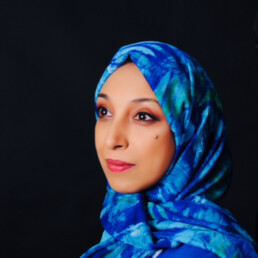
Written by Anjum Peerbacos
20 years experience as a teacher
Riz Ahmed made a powerful speech regarding diversity in the Arts: http://www.independent.co.uk/arts-entertainment/tv/news/riz-ahmed-warns-parliament-that-lack-of-diversity-in-tv-leads-people-to-isis-a7610861.html Riz Ahmed warns Parliament that a lack of diversity in TV is leading people to Isis www.independent.co.uk
He stated that if young people could not see themselves as part of the narrative or the mainstream representation, they would turn elsewhere to feel that they had a sense of belonging. He said it was the responsibility of the Arts to reflect society; to reflect the patchwork that makes up a wider world, and our global community.
In so many ways, Literature is another Art form and should be doing the same. When we study texts in class, there should be an opportunity for students to be able to see themselves in the literature world. However currently that is not the case.
For more than two academic years now, I have taught the new GCSE curriculum for English Literature, I have taught ‘Lord of the Flies’ by William Golding, ‘An Inspector Calls’ by J.B Priestly, ‘A Christmas Carol’ By Charles Dickens, ‘The Strange Case of Dr Jekyll and Mr Hyde’ by R.L Stevenson, and ‘Romeo and Juliet’, by William Shakespeare. White males that are no longer with us, have written all of these texts.
It may be that because I work in a boys school that these texts have been chosen, as the demographic of the school is largely white and male; however one could argue that in such circumstances it is vital that we expose our young people to the width, and breadth of the spectrum of the society in which we live. Students regardless of demographic and gender should be exposed to a range of writers’ experiences and Literature. It broadens their horizons, and ultimately their experiences. Students have studied the above texts, in addition to a small collection of poems largely about war, with the anecdotal inclusion of Benjamin Zephaniah and John Agard. ‘The Conflict Cluster’ largely addresses the atrocities of war, and as a result these young people have not been exposed to the wealth of Literature that exists in the world.
Across the exam boards, the choices have been extremely narrow. There are few women and even fewer texts from a diverse or BAME background. I appreciate the need to study the works of Shakespeare but, not counting The Bard, on the AQA specification there are 19 opportunities to explore other Literature texts and only 2 are from non-White authors.
On the Edexcel specification there are 15 opportunities to study a text written by a white male, there is only 1 non-White BAME author. On the Edexcel specification, all White Male playwrights write the Modern Drama Texts. WJEC offers two options which are non-White authors, however is more inclusive of female writers over time.
Obviously, I understand that we want children to study, learn and love Shakespeare and he is a white male and is from the 17th century. There is one re-occurring BAME author for modern prose and that is Meera Syal and her novel ‘Anita and Me’, and I can’t help wondering how much of a token of her appearance on the curriculum is.
My other concern regarding the curriculum is does it need to be British? And is there a place for Modern World Literature or modern world prose or drama? Why are we limiting our young people to English British largely male Literature, which is no longer representative of the global world in which we all live?
In addition, what constitutes British Literature? Is Syal considered English Literature or British Literature? Moreover, why are we not considering the likes of Malorie Blackman? Blackman is a modern Black female author and is much needed. She addresses many sensitive issues within her texts which provide the debate needed, which would also meet the Social Moral Spiritual and Cultural (SMSC) criteria, which Ofsted demands of schools.
I happen to work in a boys school, and I am teaching an entirely male curriculum, bar a few poems in the poetry anthology, and my worry is that these boys are going to live, work, learn and prosper and flourish in a world which includes men and women. A world, which includes the young and the old. A diverse world which includes people from all walks of life. So why is our Literature curriculum not reflecting this and preparing them for the alternative view? For the different perspective? For the obscure or the distance or the far-reaching? Why is it so inward looking and insular? Surely, this is then a potential breeding ground to consider anything different as ‘The Other’? How is this progressive?
As Ahmed stated the Arts should be a representation of the world and narrative in which one can see oneself. Why aren’t ‘we telling these kids they can be heroes in our stories, that they are valued’? Ahmed goes on even further to state that if a young person cannot see themselves in the wider narrative then ‘we are in danger of losing people to extremism’. I think he makes some valid points. If you are studying a text for six weeks in a classroom, and potentially over five years you do not find yourself represented in any of those stories, then is Ahmed making a wider point? Do we not have a responsibility to deliver a narrative which is outward looking and less insular?
The curriculum was developed under Michael Gove, https://qualifications.pearson.com/en/qualifications/edexcel-gcses/english-language-2015.html
and I feel as though he has been able to dictate a curriculum, which he saw fit in an era, which is no longer fitting or applicable to our young people now.
The issue has been raised before, however I feel that now more when students are asked to regurgitate texts in exams, texts that they may not be able to relate to, or even understand, it has become a more pertinent issue. In light of recent events where we have witnessed a rise in hate- crime, communities feeling isolated and marginalised, immigrants being targeted; I think that now more than ever our young people should understand a wider broader spectrum of literature appreciating and celebrating difference and diversity. Of course, there is a place for Shakespeare and Romantic poetry, and of course, there should be an appreciation of the likes of Dickens and Austen. However, should there not be an opportunity to experience World Literature?
Our young people are interacting on a global platform and developing a global community. If I were a young person living in 21st century Britain, I would not think the Literature that I am exposed to on the current curriculum is in any way reflective of me, or the world in which we all live.
Why Diverse Representation Matters in Children’s Books

Written by Orla McKeating
Entrepreneur, coach and motivational speaker
I started Still I Rise Diversity Story Telling for Kids in 2019 as a passion project as I really didn’t see enough representation in kids’ books. As a single mother of a bi-racial child I had learnt the importance of this for the well-being, influence and mental health of this for children, but I didn’t imagine the impact this would have on so many young people around the world. Still I Rise is now a global business, lockdown forced us to do virtual storytelling sessions which has massively built our community and the feedback we have received from parents, psychologists, teachers and the kids themselves has been incredible. And having worked with hundreds of children globally we can see the impact first-hand of the importance of diverse and inclusive books, how it builds confidence, empathy skills, how it inspires and creates impact and allows for deeper connections with society as a whole.
I was blissfully unaware of the importance of a diverse and inclusive world having been brought up in largely white Northern Ireland into a family of privilege and shielded from the Troubles we experienced until I was in my late teens. I lived in Belgium for 10 years post university in a culturally rich and very international society and moved back to Belfast in 2012 where I began to bring up my son as a single parent. We always read books together from when he was so tiny, and I wondered was it really that great to read from such a young age? But now at 7 years old, he is such an avid reader and communicator and I can see that it absolutely did. What I did notice was that there were so few characters in the books that looked like him. This baffled me and I wondered why this was. Of course, I could find the books when I looked for them, but they weren’t so readily available as they are now. Why is this representation so important though I hear you ponder …?
Well. The whole world is not white, able bodied and with a nuclear family structure. When children read books and don’t see people like them in them, they don’t feel included in society which can have a massive effect on their own confidence and self-worth. However, when there are characters similar to themselves culturally or ethnically, I have seen it reinforce a more positive view on themselves and pushes them towards goals and allows them to believe that anything is possible! How can you be what you can’t see, right?
Seeing characters, ideas and experiences in books that are unlike ours allows our children to open their minds and teaches them (and us for that matter) to value the whole human race and not just people who look like us. This equity within literature teaches empathy from a young age which helps them build secure and strong relationships with those around them while promoting tolerance and acceptance.
Being included in books and seeing other people like them facing challenges and making a difference in the world really helps kids have a deeper understanding of our world and how great things are possible. It creates impact, allows them to have role models they may never have met who influence their actions and behaviour, help them to overcome challenges and push them to their full potential.
Books with a diverse and inclusive representation allow a mirror or a window for what our next generation can do for themselves. They read about a wide range of human experience – familiar or strange, real or imagined and they can manifest a larger window of opportunity for themselves. This allows for authentic connections which allows them to feel less alone, more important and increases self-esteem.
While embracing books within education that promote diversity, equity and inclusion it is also important to encourage our kids to see colour, culture, history, identity and acknowledge the impact it has on our lives and experiences. Encouraging an actively diverse life through books, TV, films, toys, food music and embracing curiosity, welcoming questions and having the conversations can really encourage the next generation to have a clear understanding and acceptance that every human deserves to be treated fairly and with respect no matter who they are. And imagine the possibilities in a world like that.
We Need Diverse Books

Written by Anna Szpakowska
Professional Development Lead at Lyfta
The outpouring of shock, disgust and despair surrounding the murder of George Floyd this year rightly drew our attention to the discrimination suffered by so many on a daily basis. It also drew our attention to the institutional racism pervasive in much of our society. This heightened social awareness led to discussions of diversity in education, with calls for the history curriculum to include black British history and many English teachers sharing their recommended diverse reading lists or schemes of work online. In fact, some young people started a petition to ask the government to include The Good Immigrant and Why I’m No Longer Talking to White People About Race on the GCSE English Literature specification.
It was heartening to see so many educators impassioned to provide an education to young people which directly tackled issues of discrimination; it’s wonderful to work for a profession that not only wants to provide young people with knowledge and skills but also wants to make the world a better and more just place.
This is not the first time something like this has happened. In fact, in 2019, Edexcel were forced to add more texts from black, Asian and other minority ethnic writers to their GCSE Literature specification, after complaints about there being ‘too many dead white men’ on the reading list. This decision whilst perhaps well-intentioned, was met with disappointment from educators suggesting that the choices of texts, added by Edexcel, were not challenging enough. And, as Diane Leedham pointed out ‘As with all the exam boards in 2014, it’s clear that the people choosing the set texts that they frame as ‘diverse’ don’t have much knowledge of diaspora literature’.
Nevertheless, according to statistics from 2019, only 12.6% of students sitting an English Literature GCSE in 2019, sat the Edexcel qualification. In fact, the largest percentage (85%) of pupils sitting an English Literature GCSE in 2019 sat the AQA qualification. And figures from the AQA Examiner’s Report in 2019 show that of the most popular texts studied by all centres completing the AQA English Literature GCSE, all of the authors were white men, very few of the characters were women and none of the characters were black or Asian. The dilemma for educators then, is not only are the exam boards not providing enough suitable texts to truly reflect the experiences of most of us in society, but that the majority of schools themselves continue to choose to teach texts written by dead white men.
As teachers of English literature, we are the gatekeepers of books and literature accessed by many young people. It is, therefore, our moral obligation to expose young people to a wide variety of texts that provide them with a range of experiences, voices and characters. As Botelho and Rudman explain (expanding on Sims-Bishop’s metaphor of windows, mirrors and doors):
‘Children need to see themselves reflected so as to affirm who they and their communities are. They also require windows through which they may view a variety of differences…. Literature can become a conduit- a door- to engage in social practices that function for social justice’
Where are all the women?
For the purposes of this post, I will focus my thoughts on female writers, characters and issues of sexism and misogyny. That is not to say that I place more value on the inclusion of female writers and characters than I do on black authors and characters, gay authors and characters or authors and characters with disabilities, for example. I just feel that as a woman, I am best placed to discuss the issue of women in literature.
So, why then, in 2020, do we have to have a discussion about young people accessing texts written by and about women? And, why is it so important anyway? Aren’t women equal after all? Unfortunately, the answer is a resounding no. Despite the equal pay act being introduced fifty years ago this year, the UK’s gender pay gap is still 17.3% with the World Economic Forum reporting that it will take 202 years to close this gap. As well as this, statistics gathered from 2019, show that the number of women and girls murdered in 2019 rose by 10% on the previous year, to take it to the highest figure since 2006. It’s clear there’s much more work to be done before we can claim our equality.
With no shortage of female authors writing about the female experience, why do we continue to choose to teach texts written by and about men? The myth of the superiority of the ‘great’ English literary canon has a lot to answer for but what worries me a great deal is that teachers continue to buy into this myth. By continuing to teach these texts – and more often than not, attempting to mirror the GCSE curriculum at Key Stage 3 too – we perpetuate the notion that one voice (the white male) is superior to everyone else’s.
And, yes, it’s true that children may be reading plenty of texts by women and about women in their own time. But, when they haven’t been taught the critical skills to unpick the sometimes-sexist depiction of female characters, I fear that we are at risk of inculcating a generation of young people with sexist ideals.
Both young women and young men need to see a variety of female characters. They need to be able to discuss issues of sexism. It’s not our job to police what they read and discourage them from reading books such Louise Rennison’s Angus Thongs and Full Frontal Snogging because, as Kimberley Reynolds explains it depicts female characters who are ‘only interested in friends, fashion and fun’. But it is our job to show young people alternatives and teach them to read critically. Characters like Starr in Angie Thomas’ The Hate U Give, for example show a passionate, intelligent, strong and socially responsible young woman. Or, Dana in Octavia Butler’s Kindred could provide opportunity for discussions of gender and race whilst also providing them with an insight into the Antebellum South and the science fiction genre too. For teenagers (some of whom will already be sexually active), it’s important to address the issue of sexual assault. Books like Amber Smith’s The Way I Used to Be could be helpful in achieving this.
What’s key here is that teachers clearly have the passion, the willingness and the desire to teach a wider variety of authors and texts. I hope the passion and impetus we have garnered this year does not disappear and our calls for a more diverse reading list can be implemented. But what must also accompany these reading lists and all literacy education is critical discussions about how and why characters are presented in certain ways.
Why Diversity Matters in Education: “The rise of an internationally-minded child.”
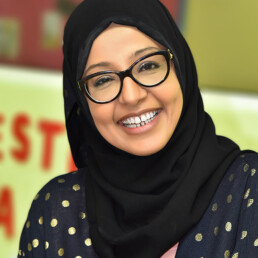
Written by Fatma Khalid
A lot has been written recently about diversity, especially in education. Whilst diversity has been “entertained” by a lot of administrators and specifically policy makers into bringing the novelty idea to practice, there is still a lot to be done in terms of making our society and specifically our educational sector more diverse.
Majority of times I have seen students, even my own children, being confused about their culture and identity specifically for children who are born and raised in countries that are not their countries of origin. The implications of this reaches out to sometimes loss of identity or even worse the breed of inferiority that we find most common even here in the UAE where certain cultures and nationalities are often viewed as being better because of how they are portrayed or advocated. This is further challenged by the market niche in the UAE which gravitates towards recruiting teachers of certain nationalities further compromising the practice or need for diversity and inclusivity. Children grow up feeling that the most knowledgeable and people holding high offices are isolated to only ‘a certain kind’ which itself is a huge impediment to ambition and self-esteem.
Although schools have tried to review their curriculums to include enriched activities that promote culturally diversified programs, little has been done to support world-wide inclusiveness or build a truly “international minded” child. Curriculums majority of times are still country bound; where they cover history or cultures to that particular country as compared to covering world history and include studying cultures of the world so children can truly build acceptance and respect and be aware of other cultures that are unique and significantly different to theirs; this is what after all is defined as an “international minded child”. How else can a child build compassion or become a global citizen if he/she spends all their lives thinking there was only one culture or history that was worth studying and understanding.
All efforts need to be in place to ensure that all children’s cultures are represented in curriculum which is highly recommended for a highly inclusive society such as the one here in the UAE. Culture awareness cannot be left for isolated occasions such as the most commonly celebrated “international day” where children and parents are encouraged to bring their traditional food and dress in their traditional clothes, then tribute done and the rest of the year, children go back to studying the curriculum (country bound) history. When we have made technology a mandate, cultural diversity too holds importance and should be integral and be embedded in our core curriculums.
Moreover, ensuring that our teams are made up of qualified individuals from different nationalities increases the opportunity for children to learn and understand cultures from multiple countries that most importantly also represents them. Curriculums are consequently enriched with creativity and increased global perspective for a truly diverse society that aims to understand, acknowledge and accept that although we are different, we are fundamentally the same kind…
The human kind.

